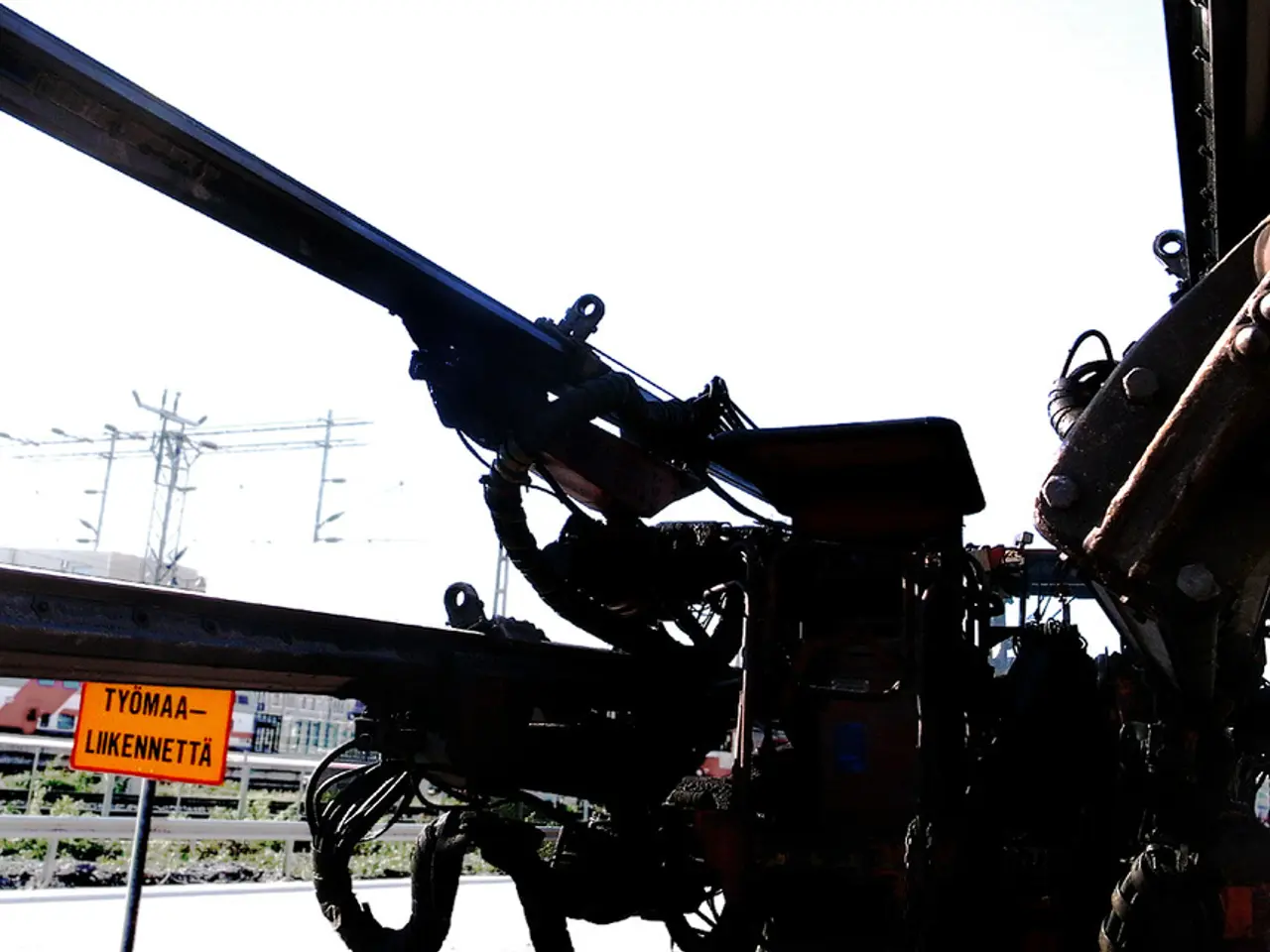AI's Impact on Energy Transition Redefining the Landscape
In the ongoing quest for a sustainable future, various sectors are embracing innovative technologies to drive change. From AI-powered robotics in manufacturing to transforming drug development, the impact of artificial intelligence (AI) is becoming increasingly apparent.
Renewables uptake is on the rise, and investment in transmission infrastructure is starting to pick up, signalling a promising future for clean energy. However, the long-term viability of nuclear power remains challenged by the unresolved issue of final repository solutions for radioactive waste.
In 2024, global investments in energy transition reached an impressive US$2 trillion. This figure is expected to rise further, with scenarios that achieve national and global emissions goals suggesting investment in power transmission could reach US$250-300 billion. Under today's policy settings, this spending would need to exceed US$200 billion per year by the mid-2030s to meet rising needs for electricity.
Nuclear power has prevented around 70 gigatonnes (Gt) of CO2 emissions over the past five decades and continues to avoid more than 1Gt of CO2 annually. This clean energy source is back on the agenda due to the appetite for stable baseload power.
As of early 2025, 63 reactors are under construction globally, representing more than 70 gigawatts of new capacity. This growth is not limited to traditional players, with big tech companies such as Amazon, Google, and Meta recognising nuclear's role in powering digital infrastructure sustainably.
The global energy transition hinges on a significant transformation of power grids. Over 400,000km of transmission networks need to be upgraded or newly constructed to alleviate bottlenecks. Smart grids powered by AI are helping utilities to optimise electricity flows in real time, reduce transmission losses, and manage growing complexity.
AI is poised to be one of the defining forces of the 21st century, but its benefits will only be fully realised if the underlying infrastructure keeps pace. This includes not just AI, but also grids, clean power, storage, and financial mechanisms that ensure industries can evolve.
Transition Finance, a concept that enables corporates to adapt to fundamental shifts driven by digitalisation, geopolitics, and regulation, plays a crucial role in this transformation. It supports the adoption of business models in the form of a transition plan or transitional economic activities.
Investing not just in AI, but also in grids, clean power, storage, and financial mechanisms that ensure industries can evolve is crucial. For instance, John Deere has developed AI-equipped robot sprayers for agriculture, reducing herbicide usage and increasing efficiency and sustainability.
Data centres, crucial for regions aiming to attract future technologies and industrial production, are already accounting for around 2-4% of total electricity consumption in large economies such as the US, China, and the European Union. However, the growth of data centres could lead to considerable strain on local power networks, particularly in regions where AI infrastructure is rapidly expanding.
Cheap and ultimately renewable energy is vital for data centres. Europe, the US, China, India, and parts of Latin America are leading the way in investment in power transmission to ensure the sustainability of these critical infrastructure components.
McKinsey's survey found that 78% of companies are now using AI in at least one business function, with the adoption of generative AI accelerating. This trend is set to continue, with AI-related electricity consumption expected to grow from approximately 1% of global electricity demand today to over 2% by 2026, potentially reaching 3% by 2030.
In conclusion, the intersection of AI, nuclear power, and energy transition presents a complex but promising landscape for a sustainable future. By investing in the right infrastructure and technologies, we can harness the benefits of these innovations while minimising their environmental impact.
Read also:
- Peptide YY (PYY): Exploring its Role in Appetite Suppression, Intestinal Health, and Cognitive Links
- Toddler Health: Rotavirus Signs, Origins, and Potential Complications
- Digestive issues and heart discomfort: Root causes and associated health conditions
- House Infernos: Deadly Hazards Surpassing the Flames








